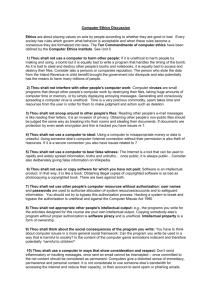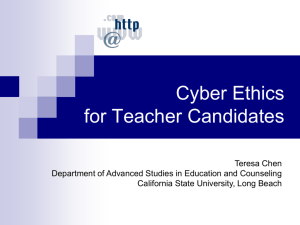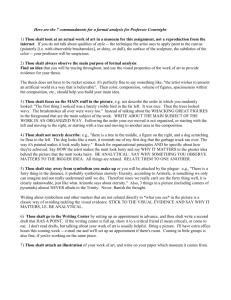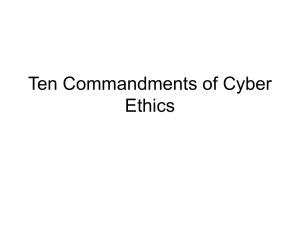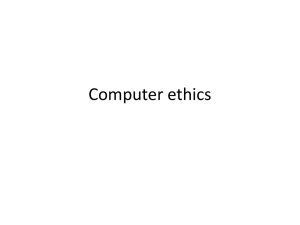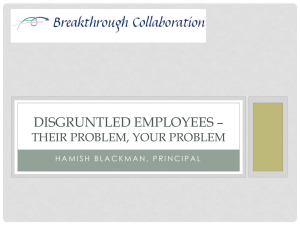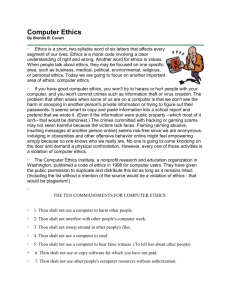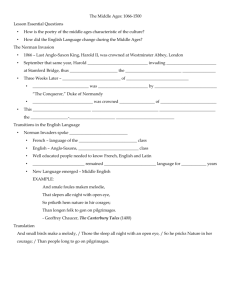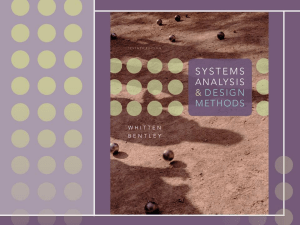Section V - Ethics 2
advertisement
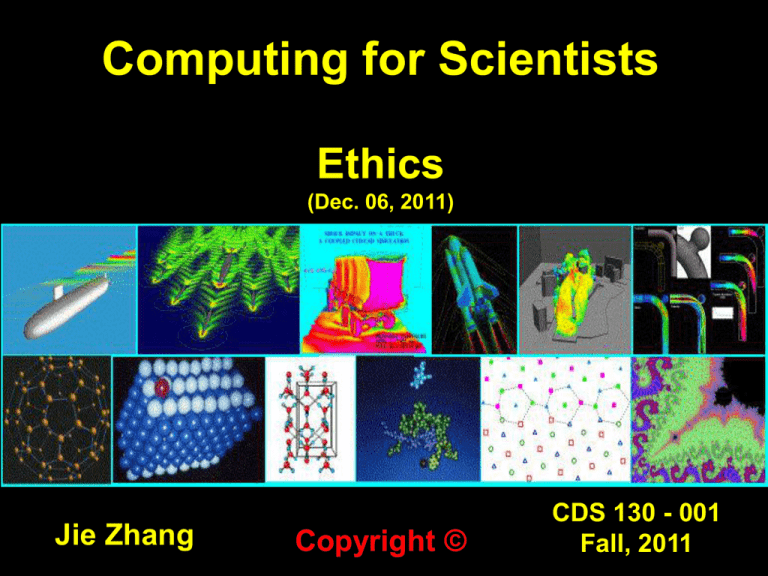
Computing for Scientists Ethics (Dec. 06, 2011) Jie Zhang Copyright © CDS 130 - 001 Fall, 2011 Where We are? Tool: MATLAB 0. Introduction & Syllabus Section 1. Computer Fundamentals Section 2. Scientific Simulation Section 3. Visualization Section 4: Data Analysis Section 5: Ethics We are here! Project: A Comprehensive Project on Data Analysis and Visualization Computing Changes Human Behavior Computing Changes Human Behavior http://www.neiu.edu/~ncaftori/ethics-course.htm Computing Changes “Human” Future: Cloud Computing http://www.exophrine.com/2010/07/what-is-cloudcomputing.html Future: Quantum Computing http://www.sciencephoto.com/media/3884/enlarge Computing Ethics: Definition Ethics: also known as moral philosophy, is a branch of philosophy that addresses questions about morality – that is, concepts such as goof and evil, right and wrong, etc. -----http://en.wikipedia.org/wiki/Ethics Computer Ethics is a branch of philosophy which deals with how computing professionals should make decisions regarding professional and social conduct -----http://en.wikipedia.org/wiki/Ethics What is unique? • Issues are new, and yet new issues are emerging • ~ 60 years of computer • ~ 30 years of internet • 13 years of Google.com • 7 years of Facebook.com • 18 months of Ipad • One months of IPHONE 4S • It means that there is no standard solution yet. What is unique? • Computing ethics are different from other professional ethics. • Internet is promoting information sharing • Internet is global • Internet is interactive • Internet is anonymous • Internet is fast and reproductive. Sample Ethic Issues 1. Software piracy 2. File sharing: share music, movies using programs such as Napster, Kazaa, BitTorrent 3. Monitoring of employee 4. Computer security: virus, worms, Trojan horses, cookies, spyware, phishing 5. Storage of personal information, e.g, in social networking websites such as Facebook and Twitter Case Study Similar Programs from Two Students In a computer class, students are asked to do an independent project involving a sizable programming in JAVA. The teacher noticed remarkable similarity among the programs turned in by student A and B. The algorithms are identical. The orderings of the lines of the source code are identical. There are only a few changes on the names of the variables. The teacher determined that one of the students must have copied the code from the other student. Question: (1) What is wrong? Why? (2) How should the teacher respond to the issue? Why? (3) When the teacher informed the two students about the “copying”, how should the students respond to it? Why? Case Study Copying music/movie from internet There are websites providing free music and movies. Many people download them and share with friends, especially among young people Question: (1) What is wrong with the web host? Why? And why do they do this? (2) What is wrong with the users? Why? (3) What penalty should be given? By who? (4) Legal issue versus ethical issue? The Ten Commandments For Computer Ethics 1. Thou shalt not use a computer to harm other people. 2. Thou shalt not interfere with other people's computer work. 3. Thou shalt not snoop around in other people's files. 4. Thou shalt not use a computer to steal. 5. Thou shalt not use a computer to bear false witness. 6. Thou shalt not use or copy software for which you have not paid. 7. Thou shalt not use other people's computer resources without authorization. 8. Thou shalt not appropriate other people's intellectual output. 9. Thou shalt think about the social consequences of the program you write. 10. Thou shalt use a computer in ways that show consideration and respect. By the Computer Ethics Institute http://www.brookings.edu/ITS/CEI/CEI_HP.HTM The End
